Market Indexes are a very useful tool for everyone. It doesn’t matter if you trade every day, every week, month, year or just buy and hold assets, market indexes can help you with your market activity. They can give you great market insights.
There are hundreds of different indexes in existence and often there are hundreds of different assets in an index. It can be close to impossible to keep track of all indexes. Luckily, not all indexes are of the same importance and therefore, you don’t have to keep track of all indexes. However, it is important to be familiar with some of the major market indexes as these can give you very good market insights.
After reading this article, you will not only know what a market index is and how it can be used, but you will also be familiar with some of the most important U.S. market indexes! This will improve your understanding of the stock market and can give you insights into where potential opportunities might lie.
What is a Market Index
A market index is a collection of different stocks or other assets within a market section. An indexes’ price is calculated from the price of its stocks/assets. The most common way of calculating an indexes’ price is by using a weighted average.
Indexes can’t be traded. However, many indexes have ETFs that track them. These can be traded just like stock. Alternatively, you can trade derivatives like futures or options on them.
Note that most countries/economies/sectors have their own set of major stock market indexes. Later in this article, I will present some of the major U.S. market indexes.
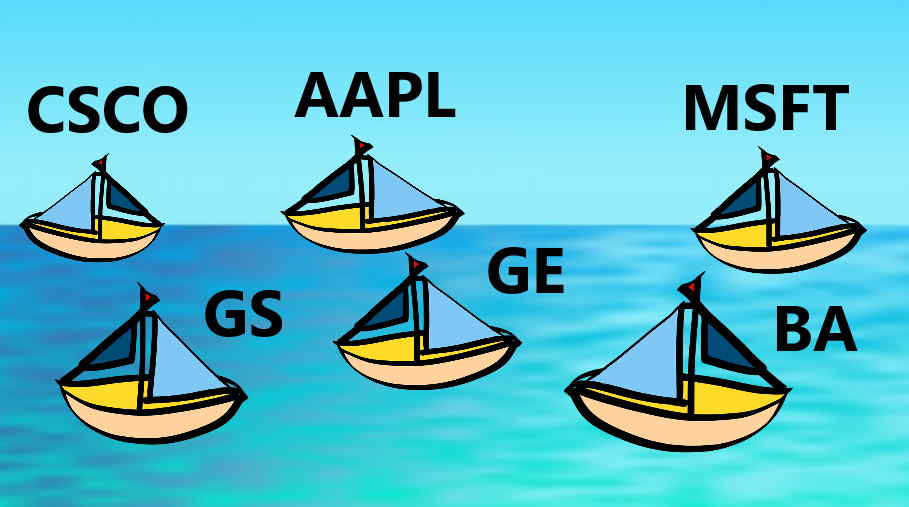 What is a Market Index used for
What is a Market Index used for
Not only will market indexes help you develop a good market awareness but they also can and should dramatically impact your trading decisions. Remember that most stocks follow the overall market and you can see what the overall market is doing by looking at indexes.
Here is a brief analogy to help emphasize the importance of indexes: Think of the market as a sea. Individual stocks are the boats floating on top of the water. When the tide (overall market) rises, all boats (stocks) rise as well. So always be aware of the sea level. (I am aware of the fact that there are exceptions.)
In the following paragraphs, I will present the most essential market indexes that everyone should be aware of. So after reading this, you will be able to identify what is going on in the market and thereby, spot potential opportunities.
I won’t get into all the technical details of every index. I rather want to focus on the importance of each index and how to use the different indexes for your trading.
S&P 500 Index
- Ticker: SPX
- Most Popular ETF: SPY
What is the S&P 500
The Standard & Poor’s 500 is probably the most popular and most well-known index worldwide. It consists of 500 large-cap companies. Companies from many different sectors like technology, energy, financials and more are implemented in this index.
The S&P 500 is probably the most commonly used index as a benchmark meaning that most trading strategies are compared to the S&P 500’s performance.
How to use the S&P 500
The S&P 500 is a great gauge for the US equity market. As it covers a wide range of companies and sectors, it gives a more general overview than other indexes. It is a very good idea to keep an eye on this index during your trading to get an idea of what is going on.
If the S&P 500 is down big on a day, chances are high that the same is the case for many other stocks.
The SPY ETF is one of the most liquid and heavily traded assets in the world which makes it a great asset for trading. It offers good internal diversification and even most SPY options are very liquid.
Here is a chart of the S&P 500’s price history from the 1980s until 2018:
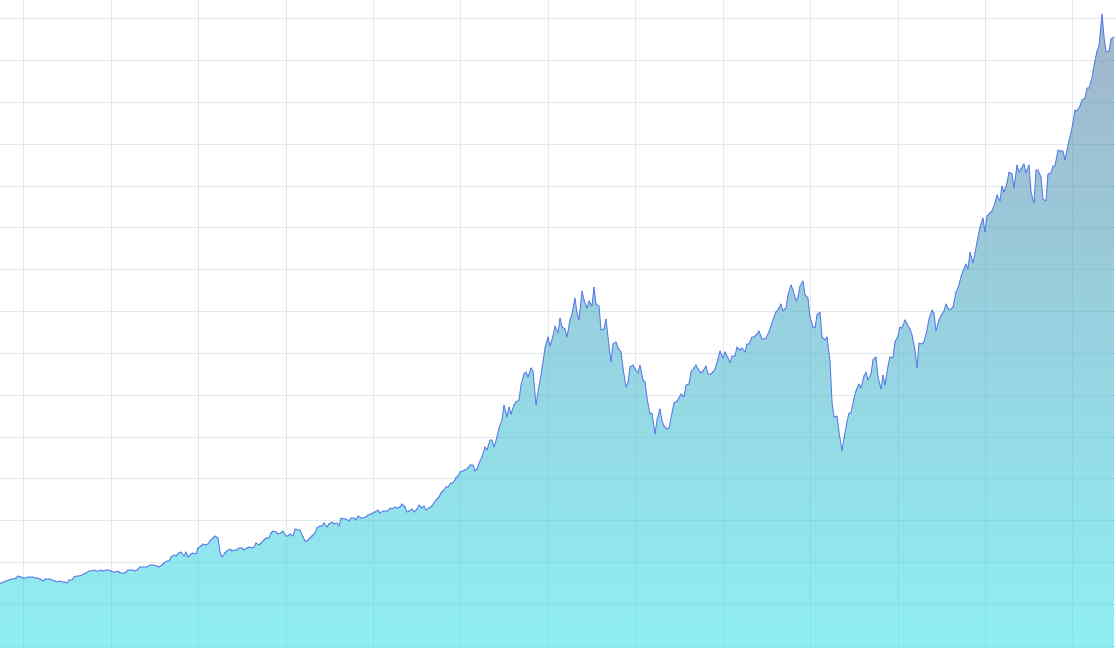
Dow Jones Industrial Average
- Ticker: DJI
- Most Popular ETF: DIA
What is the Dow Jones Industrial Average
The Dow Jones Industrial Average (DJIA), also known as simply the Dow is one of the oldest and most popular market indexes in existence. It consists of 30 large NYSE and Nasdaq traded companies as for example, Microsoft, Boeing etc. The Dow is calculated differently compared to many of the other major stock market indexes.
How to use the Dow
Similar to the S&P 500, the Dow is used most commonly to get an idea of what is going on in the overall market. However, as the Dow focuses on the largest and only 30 companies, it doesn’t give an as broad market overview as the S&P 500.
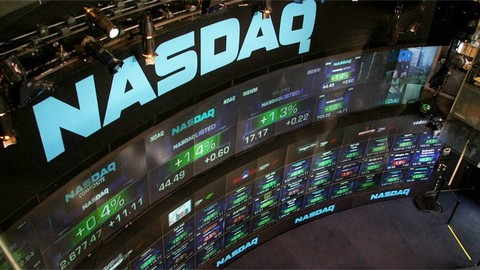 NASDAQ 100 Index
NASDAQ 100 Index
- Ticker: NDX
- Most Popular ETF: QQQ
What is the NASDAQ 100 Index
The Nasdaq 100 Index consists of the 100 largest non-financial Nasdaq traded stocks. Generally, the Nasdaq focuses more on technology-driven companies and so does this index.
How to use it the NASDAQ 100 Index
The Nasdaq 100 Index can give you a great idea of what is going on in the technology space of the market. The ETF QQQ is very popular and a great trading vehicle. It also offers a huge variety of very liquid options. The ETF is also known as the “Q’s”.
NASDAQ Composite Index
- Ticker: IXIC
What is the NASDAQ Composite Index
The Nasdaq Composite Index consists of over 3000 Nasdaq traded companies. This index moves very similarly to the Nasdaq 100 Index as they have similar holdings.
How to use the NASDAQ Composite Index
The Nasdaq Composite Index does more or less the same as the Nasdaq 100 Index. The only difference being that the Composite Index can give a broader view because it tracks more stocks. Nevertheless, the price movement isn’t very different from the Nasdaq 100 Index.
Russell 2000 Index
- Ticker: RUT
- Most Popular ETF: IWM
What is the Russell 2000 Index
The Russell 2000 Index consists of 2000 small-cap companies contained in the Russell 3000 index. The Russell 3000 Index tracks the 3000 largest U.S. stocks, which is the vast majority of the U.S. stock market.
How to use the Russell 2000 Index
Other major stock market indexes like the Dow or the S&P 500 focus on the very largest companies and therefore, they often don’t show what is happening in the small-cap sector. This is what the Russell 2000 Index is for.
IWM, the ETF tracking the Russell 2000 Index is yet another popular and liquid ETF that also offers a wide variety of liquid options.
The CBOE Volatility Index
- Ticker: VIX
What is the VIX
The CBOE Volatility Index is a very popular and useful index created by the CBOE (Chicago Board Options Exchange). It is also called the fear index or fear gauge. The VIX measures the implied volatility of S&P 500 options. In other words, it measures the expected volatility in the S&P 500 calculated from options.
How to use the VIX
Implied volatility (IV) is a very important metric in the stock market. Usually, implied volatility increases when stock prices decrease. The faster prices drop, the higher IV usually rises. If you look at the VIX during sharp decreases in times of the 2008 or other crisis, you can see that it had a huge spike.
However, this spike didn’t last too long. This is because IV tends to be mean reverting. The majority of the time, the VIX has been relatively low.
A trader familiar with the behavior of implied volatility can take advantage of the VIX by trading options on it (or by trading an ETF).
Otherwise, the VIX can give you a good idea of fear and expectation.
Here is a price chart of the VIX:
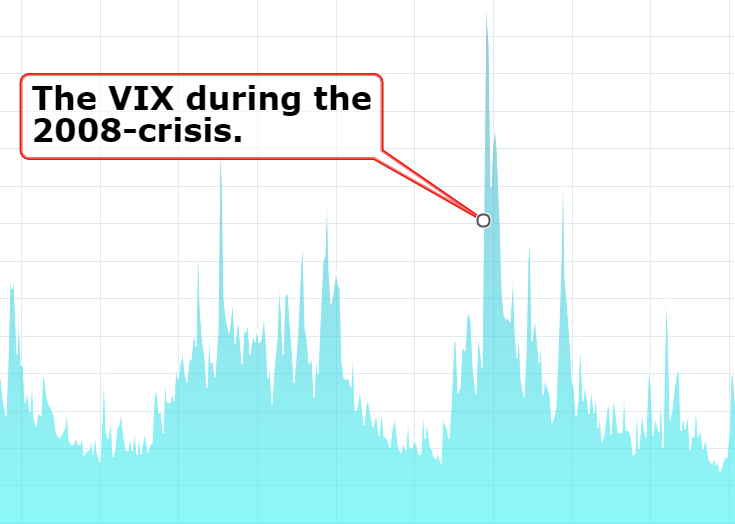
Comparison of Major Market Indexes
Here is a brief comparison between the Dow Jones Industrial Average, the Nasdaq Composite Index and the S&P 500:
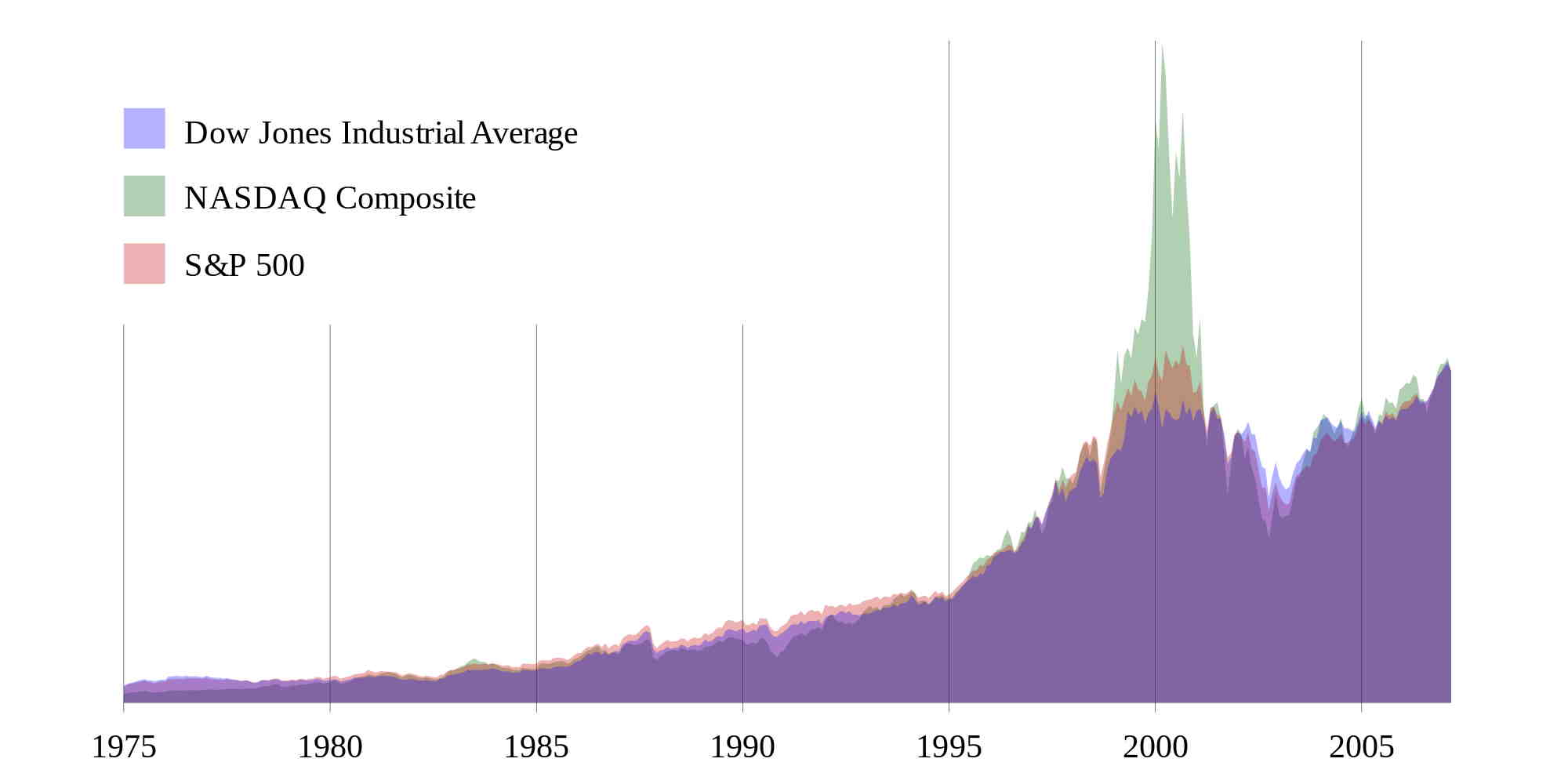
As you can see, more often than not these indexes move very similarly to each other. However, this isn’t the case all the time. For example, during the 2000 tech bubble the Nasdaq Composite Index spiked hugely. This is due to its focus on the tech sector. During 1999-2001 there was a huge tech boom which can be seen very clearly in the Nasdaq.
Even the S&P 500 was up during this time because some of the stocks in the Nasdaq Composite Index also were in the S&P 500.
However, the Dow Jones Industrial Average barely moved in those years compared to the other indexes. The reason for that is that barely any technology-focused companies were(/are) in the DJIA.
Conclusion
Hopefully, you now understand what market indexes are, why they are important and how they can be used.
Obviously, there are many more other market indexes. But these were some of the most popular and most important U.S. market indexes.
Besides these indexes, there are multiple indexes for every market sector.
It is a very good idea to keep track of these indexes to always have an idea of what is going on. Remember most stocks follow the overall market.
Indexes like the Dow, the S&P 500, the Nasdaq… often move very similarly to each other. You usually won’t find an index like the Dow up a lot if the S&P 500 is down a lot.
Instead of looking at the indexes themselves, you can also just look at ETFs tracking them or at index futures (which are open 24 hours on a normal weekday).
If you learned something new in this article, let me know in the comment section below!

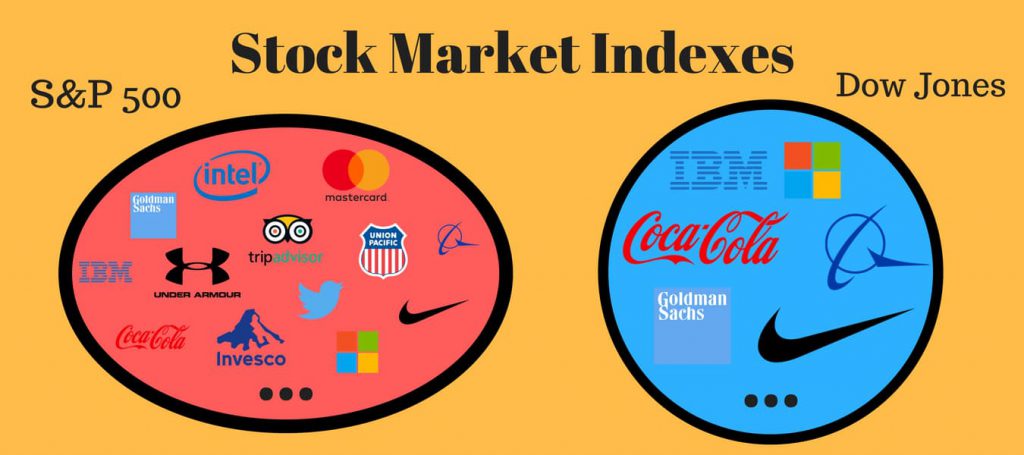
This post is way over my head but all looks very professional and informative for the right people I guess.
This is very interesting to me, as I have a chunk of my IRA invested in an ETF based on the S&P 500. I used to prefer trading in individual stocks, but when ETFs started getting popular, I found that they were a great way to get a piece of everything, without having to spend countless hours researching individual companies. I actually love the analogy of thinking of the market as a sea and individual stocks as boats floating on the water. I would have never thought of that, but it does make perfect sense to be aware of the sea level.
Great explanation about the various indexes, by the way. I’m familiar with the S&P and the Dow, but have never given much thought to others, like the Russell Indexes. I also find options very intriguing, so I plan to spend some time on your site, getting better acquainted with the concept. Great site!
Mark
Hey Mark,
Thanks so much for the comment. I am very glad that you enjoyed the article and it is great to hear that you already knew some of these indexes.
If you want to dive in to options, I highly recommend my Free Options Trading Courses.
As someone who is looking into investing, this is very valuable to me. Thanks for posting!
No problem. I am very glad that I could help you out.
Wow. This is very informative especially for the new ones in the Stock Market.
Great analogy of the market as the sea level. On the other hand, as an investor, you are the captain of the boat /ship so you have to evaluate the condition of the sea in order to sail on the safest way. One of the tools/ indicators is of course – the indexes.
My husband and I have been in the stock market for around 15 years now. But the majority of our investments are mutual funds and index funds.
Great website about trading options. But I believe Trading options is more popular in the US than here in Europe. So we do not have a very good options trading platform like fx. TD Ameritrade, which does not accept new accounts from my country (DK).
Thanks for the comment. Sadly, a lot of US brokers don’t accept clients from European countries like Denmark. However, this is not the case for all brokers. For instance, tastyworks is a very good broker for options trading and as far as I know, they do accept customers from Denmark and many other countries besides the US.
If you want to learn more about tastyworks, make sure to check out my tastyworks review.
But it is definitely true that options trading and trading in general, is more popular in the US than in most other countries.
Great information on market indexes! I knew what they were but was not aware of how to utilize them in options trading. I’m really enjoying going through the trading education. Thank you!
Thanks for the positive feedback!